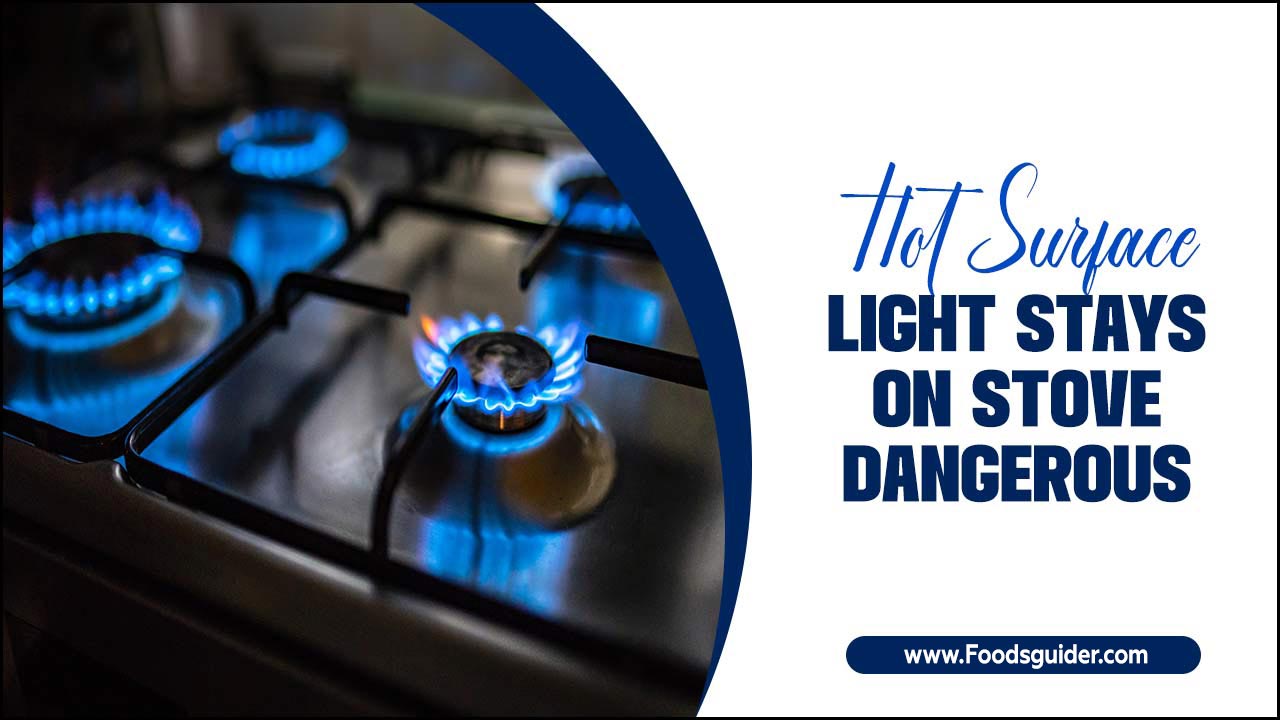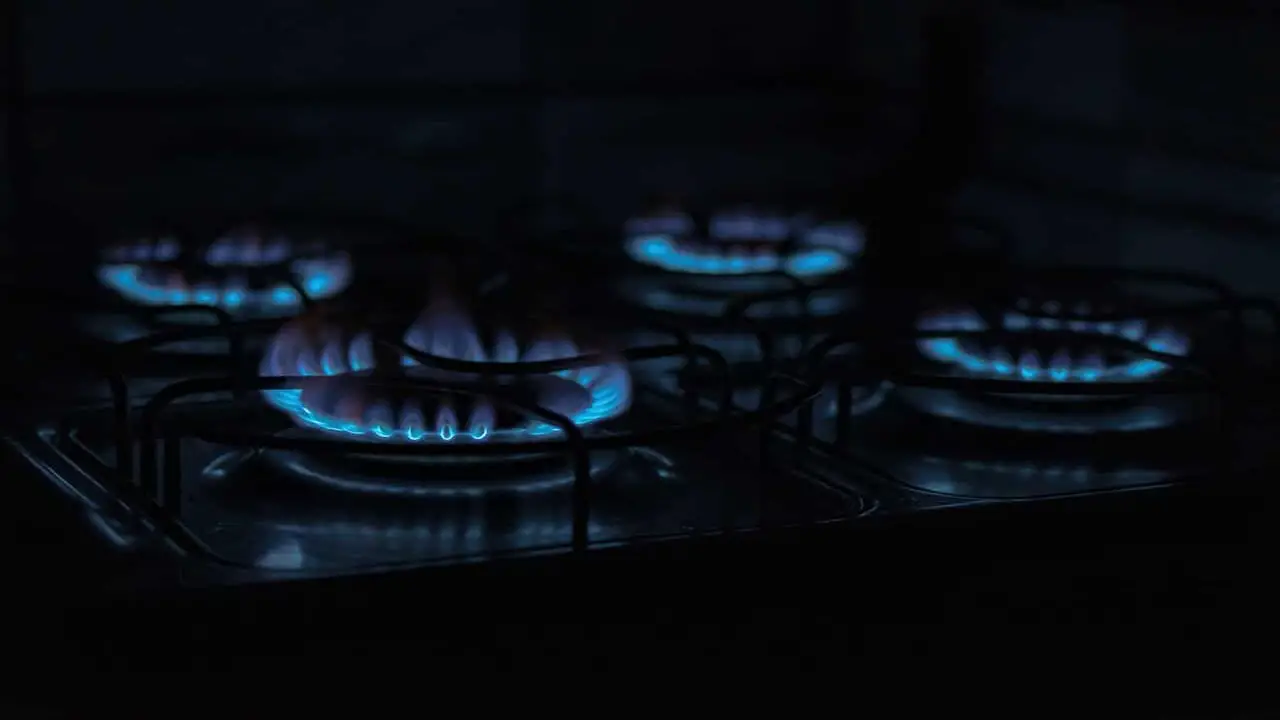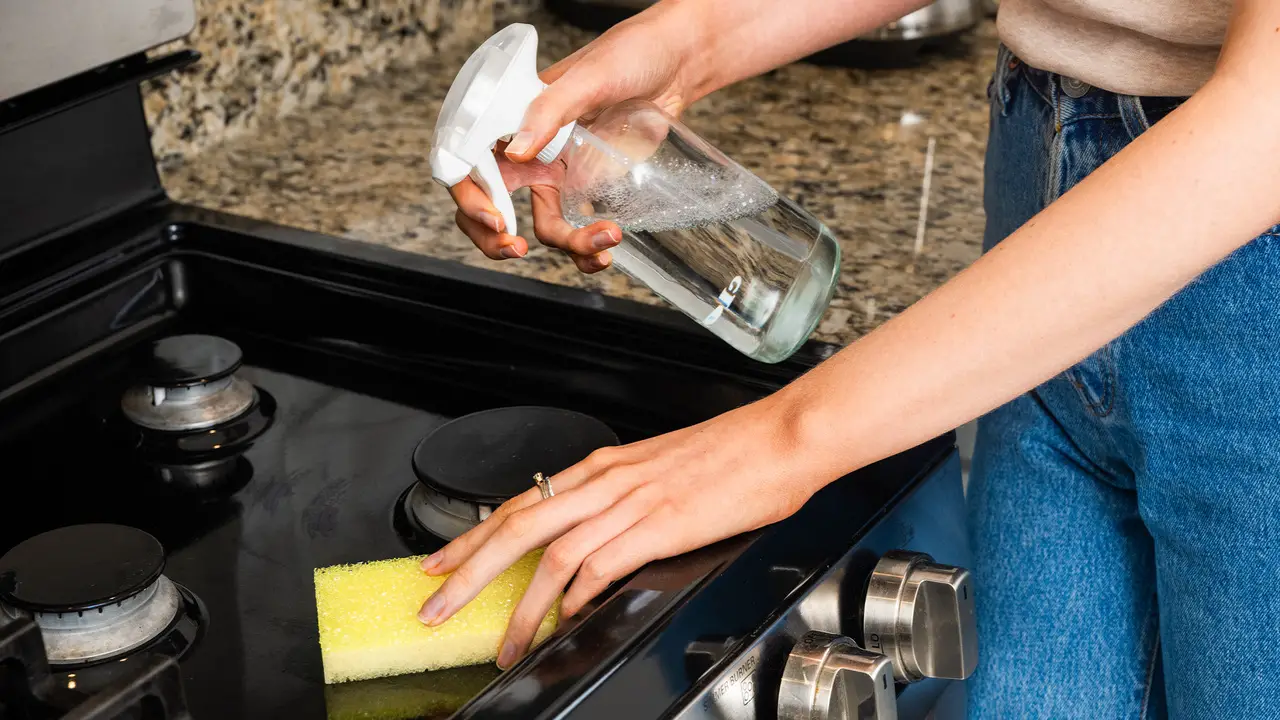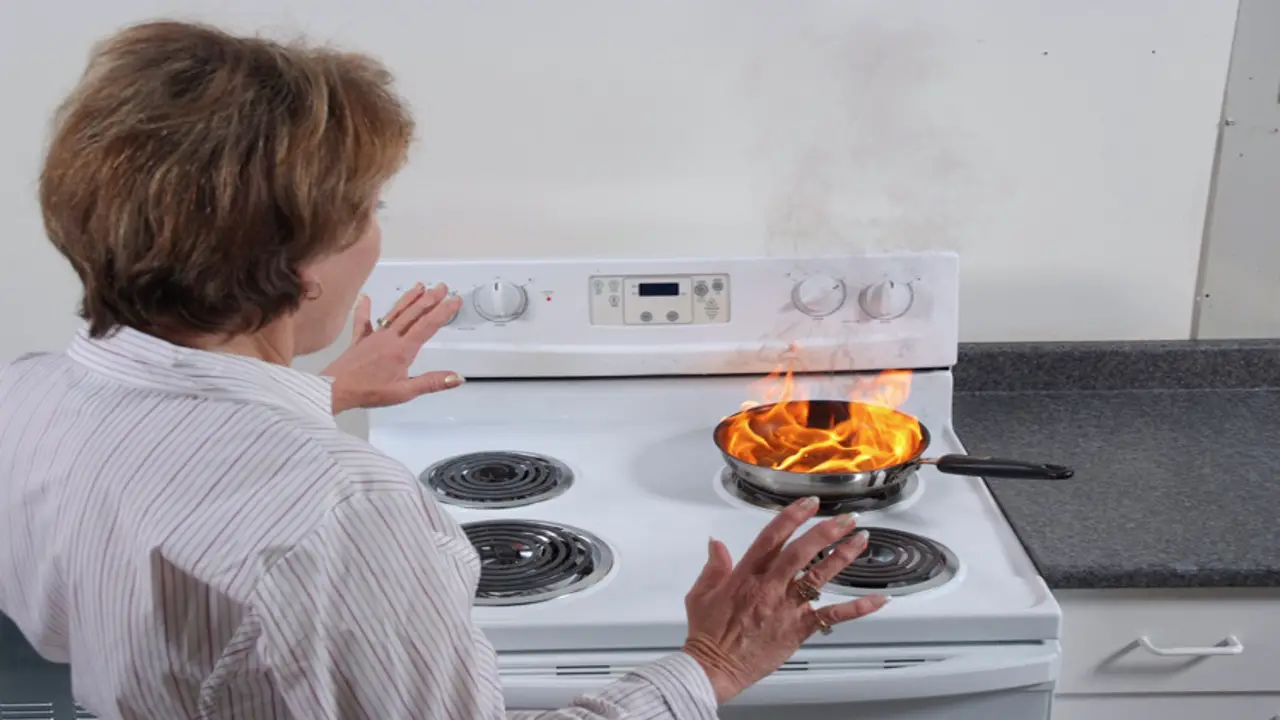The hot surface light stays on stove dangerous can be a warning sign of a potentially dangerous situation. This light indicates when the stove’s surface is too hot to touch or use safely.
If the light remains on even after the stove turns off, it is a malfunction or defect in its heating element. This can lead to overheating the stove, which can cause fires or other hazards. It’s important to take this warning seriously and investigate the cause of the issue as soon as possible.
Ignoring the warning sign can put you and your loved ones at risk of injury or property damage. We will discuss the potential dangers of a hot surface light staying on a stove and what steps can take to address the issue and ensure your safety.

What Are The Signs Of A Malfunctioning Hot Surface Light?
Hot surface lights are an important safety feature in many appliances, such as ovens and stovetops. When these lights stop functioning properly, it is a serious issue that needs addressing immediately. Some signs that your hot surface light may malfunction include flickering or dimming lights, lights that remain on even when the surface is cool, or lights that fail to turn on.
In some cases, a malfunctioning hot surface light may also be accompanied by other issues, such as uneven cooking or an inability to achieve the desired temperature. If you notice any of these signs, it is important to have your appliance inspected by a professional as soon as possible to prevent any potential safety hazards and ensure proper functioning.
How To Prevent A Hot Surface Light Stays On Stove Dangerous?

The light indicates the stove’s surface is hot, even after the burner turns off. This is especially dangerous if you have young children or pets in your home who may not be aware of the potential hazard.
The hot surface light is a warning signal that reminds you to be cautious and avoid touching the stove until the light goes off. It also serves as a reminder to clean the stove’s surface after use, as a buildup of grease or food particles can cause a fire hazard.
If the hot surface light stays on for an extended period of time, it could indicate a problem with the stove that needs to be addressed. In this case, it is important to contact a technician to diagnose and repair the issue before reusing the stove. Here are explained how to prevent a hot surface light stays on stove dangerous.
Turn Off The Stove Completely
Turning off the stove completely is an essential safety measure to prevent potential dangers in the kitchen. Many accidents occur due to stoves being left on unintentionally. Always double-check that all burners are turned off after use, even for a short duration.
Additionally, ensure that the control knobs are in the “off” position. This precaution prevents overheating and reduces the risk of fire incidents. Remember to be attentive while cooking and make it a habit to verify the stove’s status before leaving the kitchen, providing peace of mind and a safer cooking environment.
Check For Any Residue Or Food Debris On The Surface

Regularly cleaning the stove is more than just maintaining a tidy kitchen—it also plays a crucial role in preventing dangerous situations. Residue, grease, and food debris can accumulate on the stove’s surface and around burners.
When the stove is used again, these particles can get overheated, emit smoke, or even catch fire. To avoid such hazards, periodically wipe down the stove after each use and perform a deeper cleaning. Use appropriate cleaning agents and tools to ensure a spotless and safe cooking area, keeping your kitchen aesthetically pleasing and secure.
Ensure That The Burner Is Cool To The Touch
A hot stove burner can cause accidental burns and injuries, especially in busy kitchens. Ensuring that the burner is cool to the touch after cooking is a vital safety step. The burner retains heat for a while, even when you turn off the stove.
To avoid contact burns, refrain from touching the burners until they have cooled down completely. Consider using indicator knobs or stickers to remind you of hot surfaces. Practising this precautionary measure protects you and your loved ones from accidental burns, making your cooking experience safer and more enjoyable.
Clean The Stove Regularly
Cleaning the stove regularly is more than just an aesthetic choice—it significantly contributes to kitchen safety. A clean stove reduces the risk of fire incidents, prevents potential health hazards, and prolongs the appliance’s life.
Grease and food particles can accumulate around burners and control knobs, which, when exposed to heat, can cause smoke or even fire. Routinely wiping down the stove with suitable cleaning agents removes dirt and debris, providing a safer environment for cooking. Make it a habit to clean the stove after each use, and periodically perform a thorough cleaning for optimal safety and hygiene.
Check For Any Loose Connections Or Damaged Wires

The electrical components of a stove can pose safety risks if not properly maintained. Regularly inspect the stove’s electrical connections for any signs of damage, wear, or loose connections. Damaged wires can lead to electrical malfunctions, which may cause the stove to overheat or stop working altogether.
If you notice any issues, refrain from using the stove until it has been professionally inspected and repaired. Taking proactive measures to ensure the stove’s electrical integrity guarantees a safer cooking environment for you and your family.
Replace Any Faulty Parts Immediately
A well-functioning stove is crucial for a safe and efficient cooking experience. Take immediate action if you encounter any faulty components during inspections, such as malfunctioning control knobs, heating elements, or sensors.
Using a stove with faulty parts can lead to hazardous situations like overheating or uneven cooking. To maintain a secure kitchen environment, promptly replace any damaged or malfunctioning parts with genuine replacements. Seeking professional help for repairs ensures that the stove operates optimally, reducing the risk of accidents and ensuring a longer appliance lifespan.
Use Caution When Cooking With High Heat
Cooking with high heat on the stove can benefit certain recipes, but it also comes with potential risks. High heat settings can cause the stove to become extremely hot, increasing the chances of accidental burns or fires.
Always use caution when cooking at high temperatures and be attentive to the cooking process. Avoid leaving the stove unattended, and keep a close eye on the food to prevent mishaps. Using appropriate cookware and adjusting the heat as needed can help maintain a safe cooking environment while achieving delicious results.
Avoid Leaving The Stove Unattended

Leaving the stove unattended while cooking is a common cause of kitchen accidents. Even a momentary distraction can lead to a dangerous situation, such as food burning or oil splattering. Always stay in the kitchen while using the stove and focus on cooking.
If you need to leave the kitchen temporarily, turn off the stove first. This simple practice can prevent potential fires, burns, and other accidents. By staying vigilant and attentive, you create a safer cooking environment for yourself and your family.
Keep Flammable Objects Away From The Stove
Flammable objects near the stove can be a significant fire hazard. To prevent potential disasters, ensure that flammable items such as kitchen towels, curtains, or paper are kept at a safe distance from the stove.
Maintaining a clear area around the cooking area is essential, reducing the risk of accidental fires. If you have a gas stove, be cautious about keeping flammable items near the open flames. Creating a safe zone around the stove minimizes the chance of ignition and allows you to cook with peace of mind and enhanced safety.
Conclusuion
Leaving the hot surface light stays on stove dangerous can be very dangerous. The light warns users that the surface is still hot and can pose a risk of burning or fire. Neglecting to turn off the light can lead to unfortunate incidents, such as accidental burns or house fires.
It is important to be mindful of the hot surface light and take appropriate action to ensure safety in the kitchen. The success of this effort can mean preventing potential injuries and damage to property. Users can take the necessary steps to prevent accidents and maintain a safe cooking environment by recognising the danger of leaving the hot surface light on.
FAQ’s:
1.How Long Does The Hot Surface Light Stay On After Cooking?
Ans: The duration of the hot surface light staying on varies depending on the stove model and how hot the surface is. It can typically take a few minutes to half an hour for the light to turn off after cooking.
2.Can I Touch The Stove When The Hot Surface Light Is On?
Ans: It’s essential to avoid touching the stove’s hot surface when the hot surface light is illuminated. The light indicates that the surface is still hot enough to cause burns, so exercise caution until the light turns off.
3.How Can I Make The Hot Surface Light Turn Off Faster?
Ans: There is no way to speed up the cooling process. The hot surface light will turn off automatically once the stove’s surface cools to a safe temperature. Trying to manipulate the system may lead to safety issues.
4.Is The Stove Dangerous When The Hot Surface Light Stays On?**
Ans: The stove itself is not dangerous when the hot surface light stays on. However, the hot surface can pose a risk of burns if accidentally touched. It’s crucial to be cautious and avoid contact with the hot surface until the light turns off.
5.Can I Disable The Hot Surface Light On My Stove?
Ans: The hot surface light is a safety feature and is not meant to be disabled. Tampering with or disabling safety features on a stove can compromise its safe operation and is not recommended.
